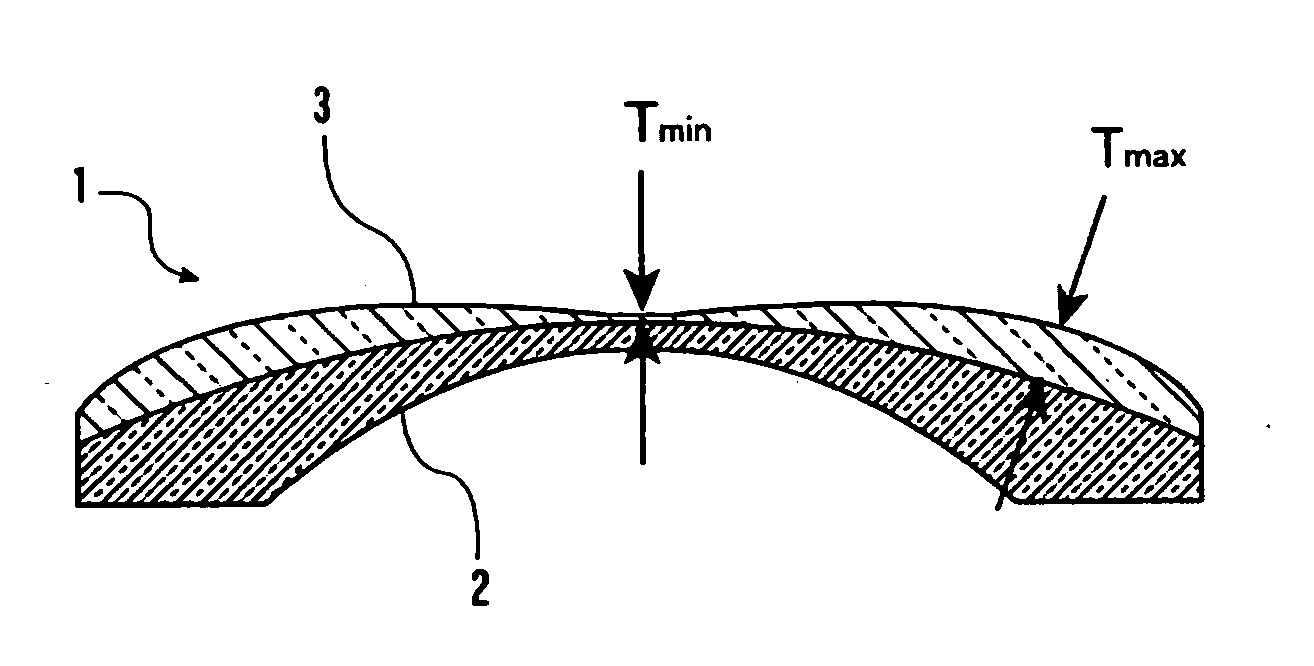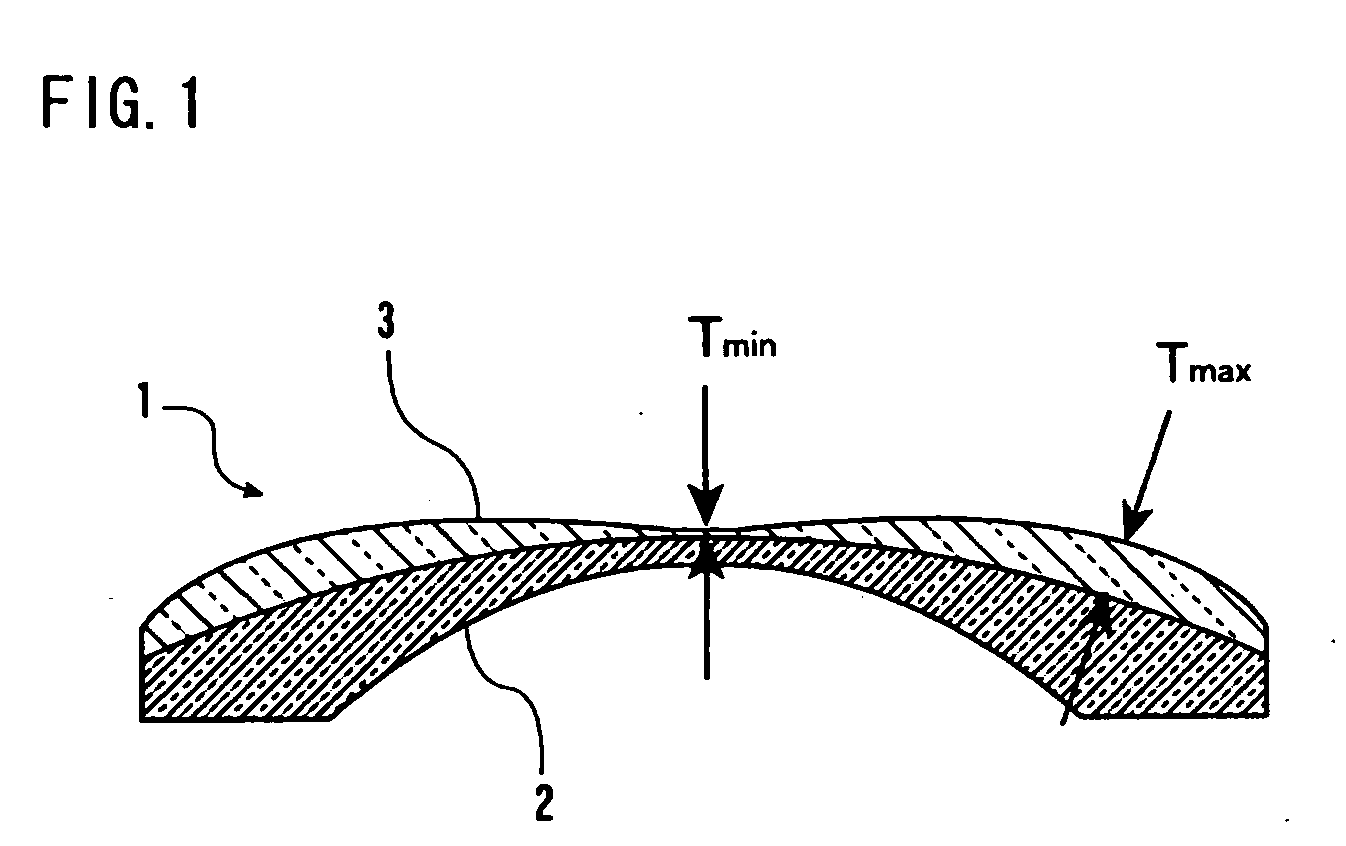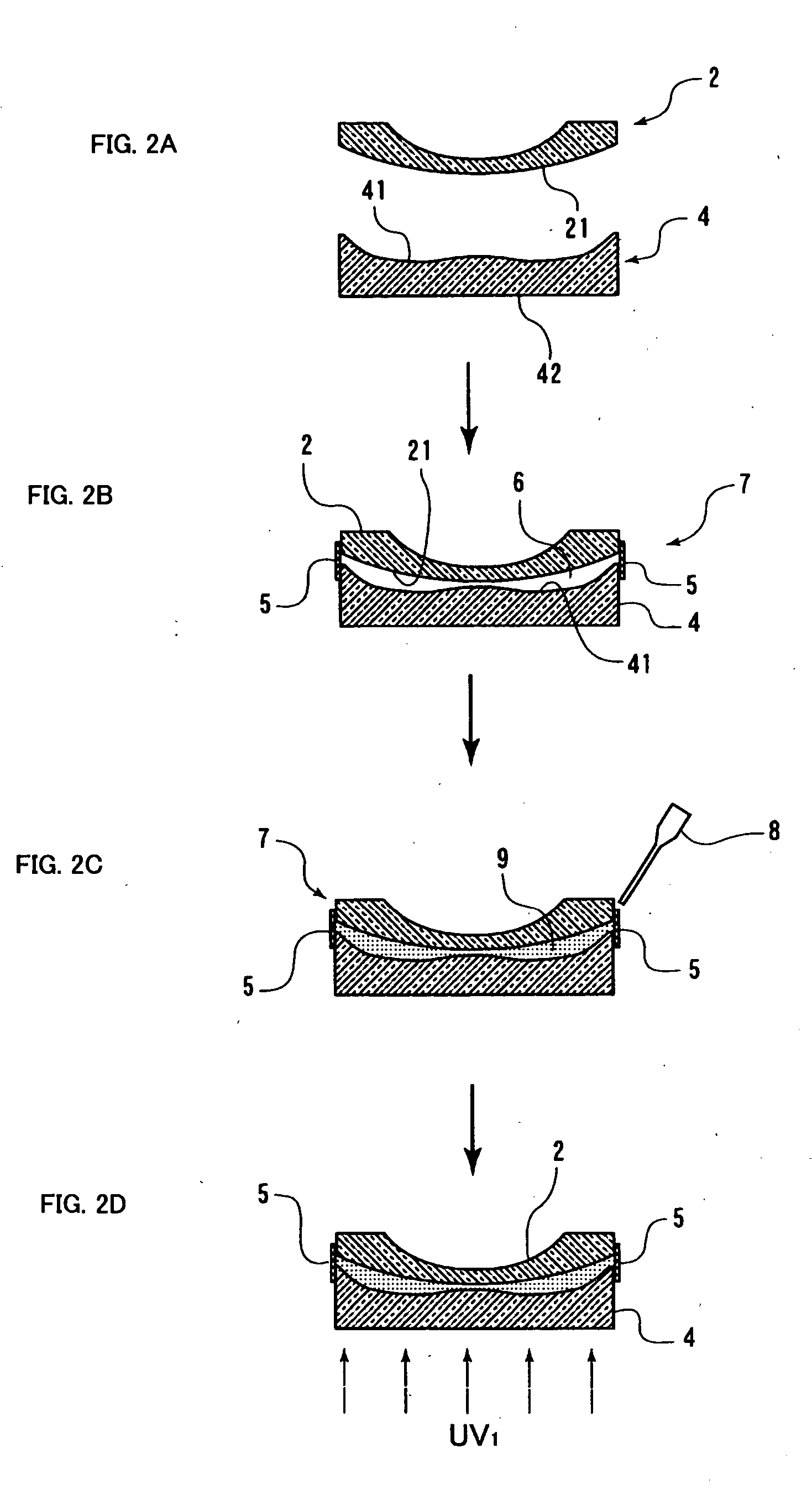Resin composition for hybrid lens, method for producing hybrid lens, hybrid lens and lens system
a technology of hybrid lenses and resin compositions, applied in the field of hybrid lens manufacturing, can solve the problems of large aspherical quantity of aspherical lenses, high production costs, and difficult manufacturing, and achieve the effects of improving the adhesion, enhancing the transfer accuracy of aspherical surfaces, and improving resin layer surface hardness
- Summary
- Abstract
- Description
- Claims
- Application Information
AI Technical Summary
Benefits of technology
Problems solved by technology
Method used
Image
Examples
example 1
[0122] After mixing 65 parts by weight of 9BGDM (manufactured by Mitsubishi Rayon Co.: trade name of products, ICURE M-70), 12 parts by weight of TCDM (manufactured by Hitachi Kasei Kogyo Co.: trade name of products, FA-513MS), 20 parts by weight of UDA2 (manufactured by Mitsubishi Rayon Co.: trade name of products, DIABEAM U-12), 3 parts by weight of MTS (manufactured by GE Toshiba Silicone Co.: trade name of products, ORGANOSILANE TSL-8730), 300 ppm of bis (2,4,6-trimethylbenzoyl)-phenyl phosphine oxide (manufactured by Chiba Specialty Chemicals Co.: trade name of products, IRGACURE 819), and 1000 ppm of t-butylperoxy isobutylate (manufactured by Nippon Yushi Co.; trade name of products, PERBUTYL IB), and thoroughly stirring them at a room temperature, they were deaerated for 15 min by reducing the pressure to 50 mmHg to obtain a resin composition for use in the hybrid lens.
[0123] A glass lens base material of 100 mm outer diameter with a curvature of 120 mm (manufactured by K.K....
examples 2 to 5
[0144] Lenses were manufactured in the same manner as in Example 1 excepting for the use of the monomer and the silane coupling agent in the ratios shown in Table 1, change of the species of the glass material for the glass lens base material, and with or without application of the primer treatment and they were evaluated. The results are shown together in Table 1.
examples 6 to 10
[0145] Lenses were manufactured in the same manner as in Example 1 excepting for the use of the monomer and the silane coupling agent in the ratios shown in Table 2, change of the species of the glass material for the glass lens base material, and with or without application of the primer treatment and they were evaluated. The results are shown together in Table 2.
PUM
| Property | Measurement | Unit |
|---|---|---|
| thickness | aaaaa | aaaaa |
| thickness | aaaaa | aaaaa |
| diameter | aaaaa | aaaaa |
Abstract
Description
Claims
Application Information
 Login to View More
Login to View More - R&D
- Intellectual Property
- Life Sciences
- Materials
- Tech Scout
- Unparalleled Data Quality
- Higher Quality Content
- 60% Fewer Hallucinations
Browse by: Latest US Patents, China's latest patents, Technical Efficacy Thesaurus, Application Domain, Technology Topic, Popular Technical Reports.
© 2025 PatSnap. All rights reserved.Legal|Privacy policy|Modern Slavery Act Transparency Statement|Sitemap|About US| Contact US: help@patsnap.com



